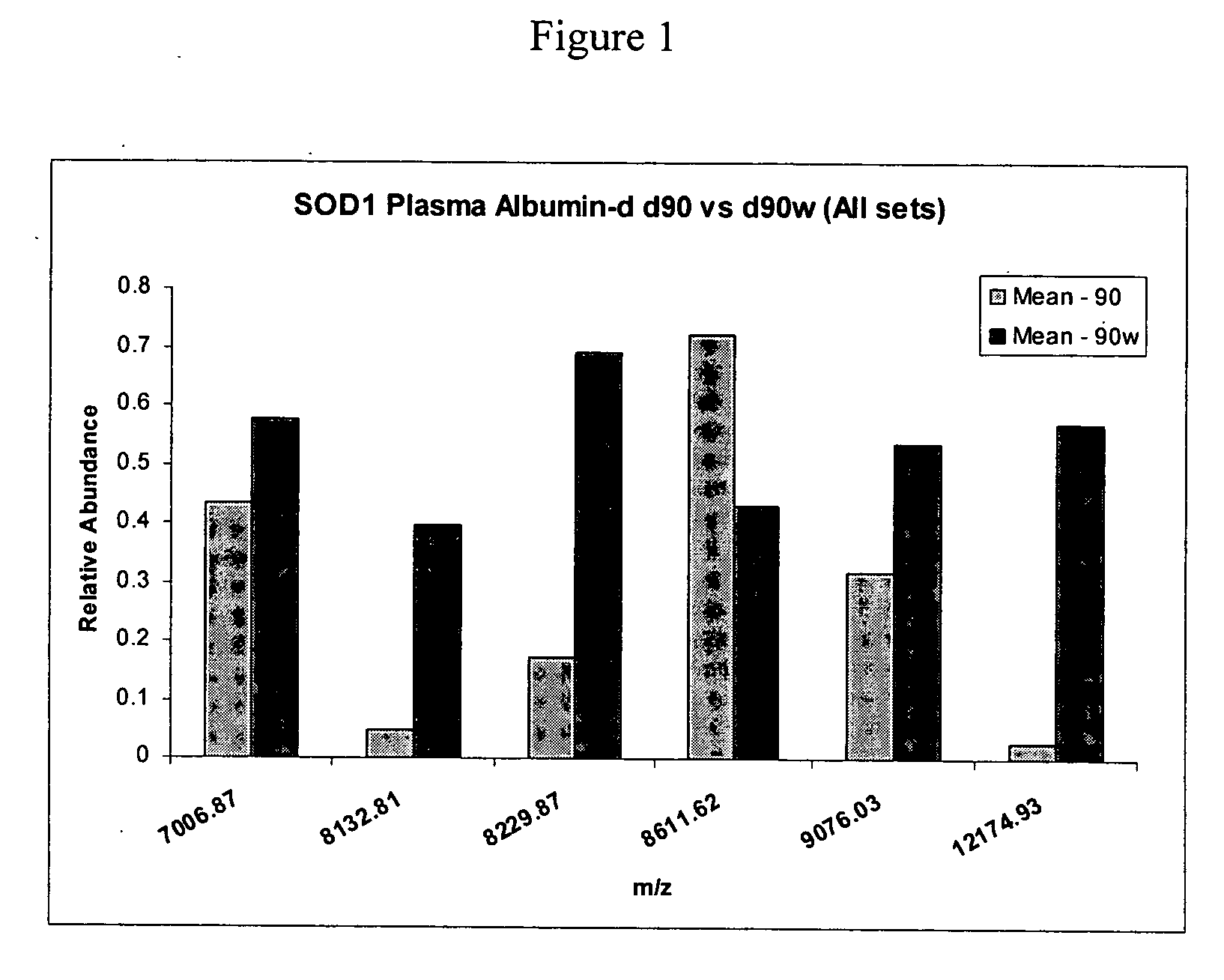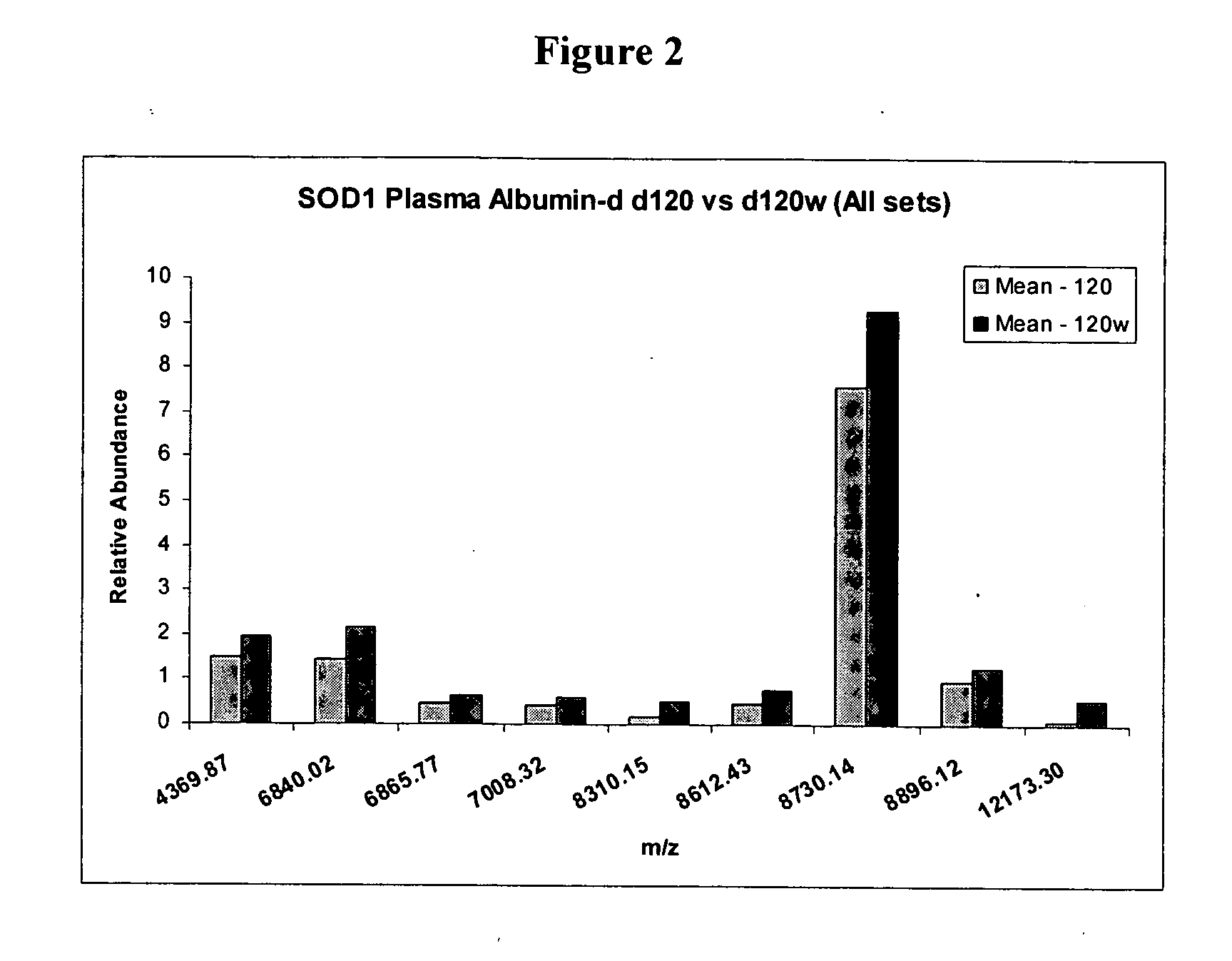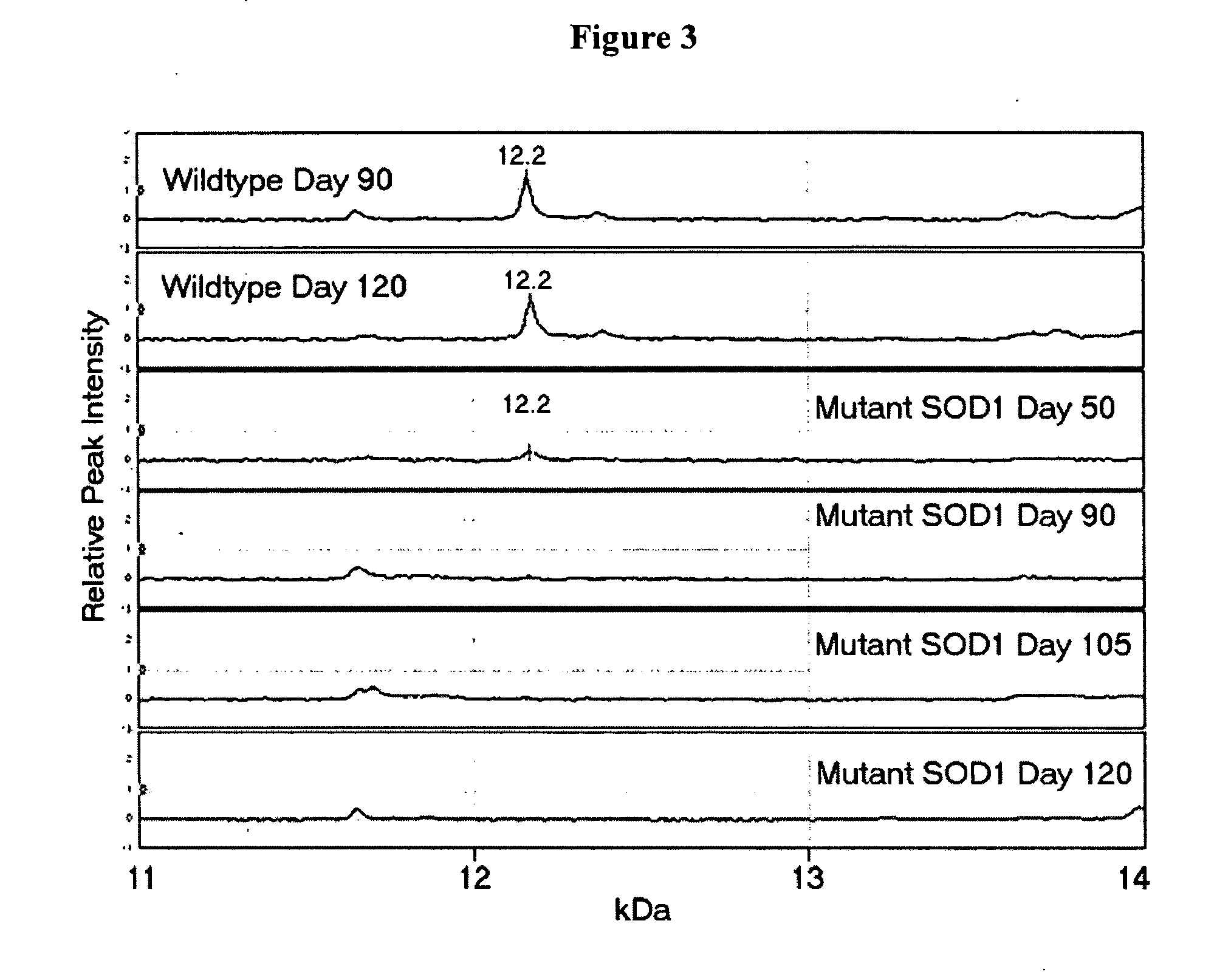Protein biomarkers and therapeutic targets in an animal model for amyotrophic lateral sclerosis
a technology protein biomarkers, which is applied in the field of amyotrophic lateral sclerosis protein biomarkers and therapeutic targets in an animal model, can solve the problems of no drugs that delay disease onset or prolong long-term survival of als patients, mutations, and no drugs that explain sporadic als (sals). achieve the effect of reducing levels
- Summary
- Abstract
- Description
- Claims
- Application Information
AI Technical Summary
Problems solved by technology
Method used
Image
Examples
example 1
[0063] This example demonstrates the identification of protein biomarkers associated with the onset of ALS.
[0064] Differences in m / z peak intensity values were determined between Day 90 control and mutant SOD1 mice (FIG. 1). Peaks of 7006 Da, 8132 Da, 8220 Da, 8611 Da, 9076 Da and 12.2 kDa were detected that exhibit statistically significant differences in peak intensity values (p<0.01). These peaks likely represent protein biomarkers at the time of symptom onset in the animal model for ALS. By similarly comparing the spectra from Day 90 control and mutant SOD1 mice, nine putative biomarkers were uncovered (FIG. 2). These were 4369 Da, 6840 Da, 6865 Da, 7006 Da, 8310 Da, 8611 Da, 8730 Da, 8806 Da, and 12.2 kDa. Three peaks (7006 Da, 8611 Da, 12.2 kDa) were common between these two figures. These protein alterations may occur early in the disease pathogenesis and throughout the course of disease. It was also discovered that the 12.2 kDa peak was present in all control mice but was p...
example 2
[0065] This example demonstrates the identification of protein biomarkers associated with the progression of ALS.
[0066] G93A mutant SOD1 transgenic mice were compared at various ages by SELDI-TOF-MS to uncover putative biomarkers for disease progression. By comparing spectra from Day 90 versus Day 105, five peaks at 4660 Da, 8547 Da, 8611 Da, 8735 Da, and 9528 Da were identified which exhibit statistically significant (p<0.01) differences in relative abundance (FIG. 5). Comparison of Day 90 to Day 120 mutant SOD1 mice uncovered six peaks of 4367 Da, 8547 Da, 8611 Da, 8725 Da, 8737 Da, and 8943 Da with statistically significant (p<0.01) differences in peak intensity values (FIG. 6). These protein peaks represent putative biomarkers for disease progression. Using classification tree algorithms, it was determined that a classification tree containing 4367 Da, 8547 Da, and 8611 Da could distinguish Day 90 from Day 120 mutant SOD1 mice with 95% sensitivity and 95% specificity.
example 3
[0067] This example demonstrates the identification of protein biomarkers within the spinal cord that are associated with ALS.
[0068] SELDI-TOF-MS analysis of lumbar spinal cord tissue samples was also performed to discover protein biomarkers within the spinal cord. Representative spectra for lumbar spinal cord tissue homogenates is shown in FIG. 7. Univariate comparison of the spectra for each age group revealed eighteen potential biomarkers that exhibit statistically significant (p<0.01) differences in peak intensity values between each age group (FIG. 8). These peaks are 2046 Da, 3208 Da, 4803 Da, 5210 Da, 5366 Da, 6174 Da, 6467 Da, 7661 Da, 8557 Da, 9905 Da, 10863 Da, 12357 Da, 14830 Da, 14992 Da, 15835 Da, 16019 Da, and 16777 Da. Four of these protein peaks, 4803 Da, 5366 Da, 8557 Da, and 16777 Da, have also been observed in the CSF of humans and are biomarkers for distinguishing the CSF of ALS from control subjects. Two additional m / z peaks of 6467 Da and 7661 Da also have sim...
PUM
| Property | Measurement | Unit |
|---|---|---|
| mass error | aaaaa | aaaaa |
| mass | aaaaa | aaaaa |
| mass | aaaaa | aaaaa |
Abstract
Description
Claims
Application Information
 Login to View More
Login to View More - R&D
- Intellectual Property
- Life Sciences
- Materials
- Tech Scout
- Unparalleled Data Quality
- Higher Quality Content
- 60% Fewer Hallucinations
Browse by: Latest US Patents, China's latest patents, Technical Efficacy Thesaurus, Application Domain, Technology Topic, Popular Technical Reports.
© 2025 PatSnap. All rights reserved.Legal|Privacy policy|Modern Slavery Act Transparency Statement|Sitemap|About US| Contact US: help@patsnap.com



